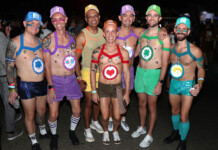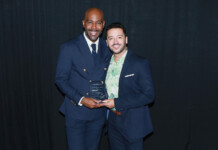It’s the holiday season and each of them count. From a Merry Christmas to a Happy Hanukkah, we can’t leave any of them out. So, when it comes to spreading the holiday cheer it’s important to be clear that Kwanzaa is also here. That’s why I would like to spend some time this year to tell you all about the Kwanzaa cheer.
The African American holiday is less known than its seasonal counterparts Christmas and Hanukkah. However, that doesn’t mean it’s any less significant for the culture that it represents. Just like our other cherished holiday celebrations, Kwanzaa is rooted in history and tradition. Although started in just 1966, the American Holiday represents a rich history of community, resilience, and love.
The 7-day seasonal holiday that starts on December 26th and ends on January 1st, is the brainchild of an American professor named Maulana Ndabezitha Karenga. Born in Parsonsburg, Maryland in the 40s, it wasn’t until the Africana Studies professors was in Los Angeles during the 1960s that he created the honored holiday of Kwanzaa. He birthed the idea in response to the racial tensions of the time.
More specifically, in response to the Watts riots, a racially charged issue in the surrounding areas of Los Angeles stemming from a drunk driving stop that ended in chaos. The story has it that 6-days of civil unrest ensued after allegations swarmed around town of police brutality against a 21-year-old black male driver, his mother and a possible pregnant woman at the scene who was kicked by an officer when the drunk driver and his mother resisted arrest.
It was after that incident that Activist Karenga believed a holiday was specifically needed for the black community. A holiday in which they could celebrate the season with traditions belonging to their African heritage, a removal from any holiday societal assimilation at the time. The conceived Black American holiday has roots in African harvest festival traditions. In the words of Professor Karenga, the name Kwanzaa comes from the Swahili phrase matunda ya kwanza, which means first fruits.
The 7-days of Kwanzaa are marked with the lighting of a new candle placed on a Kinara (candle holder). Each day has a meaning and are representative of the 7 principles of Kwanzaa:
Umoja (Unity): To strive for and to maintain unity in the family, community, nation, and race.
Kujichagulia (Self-Determination): To define and name ourselves, as well as to create and speak for ourselves.
Ujima (Collective Work and Responsibility): To build and maintain our community together and make our brothers’ and sisters’ problems our problems and to solve them together.
Ujamaa (Cooperative economics): To build and maintain our own stores, shops, and other businesses and to profit from them together.
Nia (Purpose): To make our collective vocation the building and developing of our community in order to restore our people to their traditional greatness.
Kuumba (Creativity): To do always as much as we can, in the way we can, in order to leave our community more beautiful and beneficial than we inherited it.
Imani (Faith): To believe with all our hearts in our people, our parents, our teachers, our leaders, and the righteousness and victory of our struggle.
Originally, thought to be a holiday celebrated in place of Christmas, Kwanzaa grew to become a holiday that can be celebrated along with other seasonal holidays as Author Karenga mentioned in his 1997 book Kwanzaa: A Celebration of Family, Community, and Culture.
Now, celebrated throughout the United States and abroad Kwanzaa’s universal message is one of harmony, reflection, connection, love, affirmations, peace, and celebration — sentiments that can be adopted by all walks of life.
















